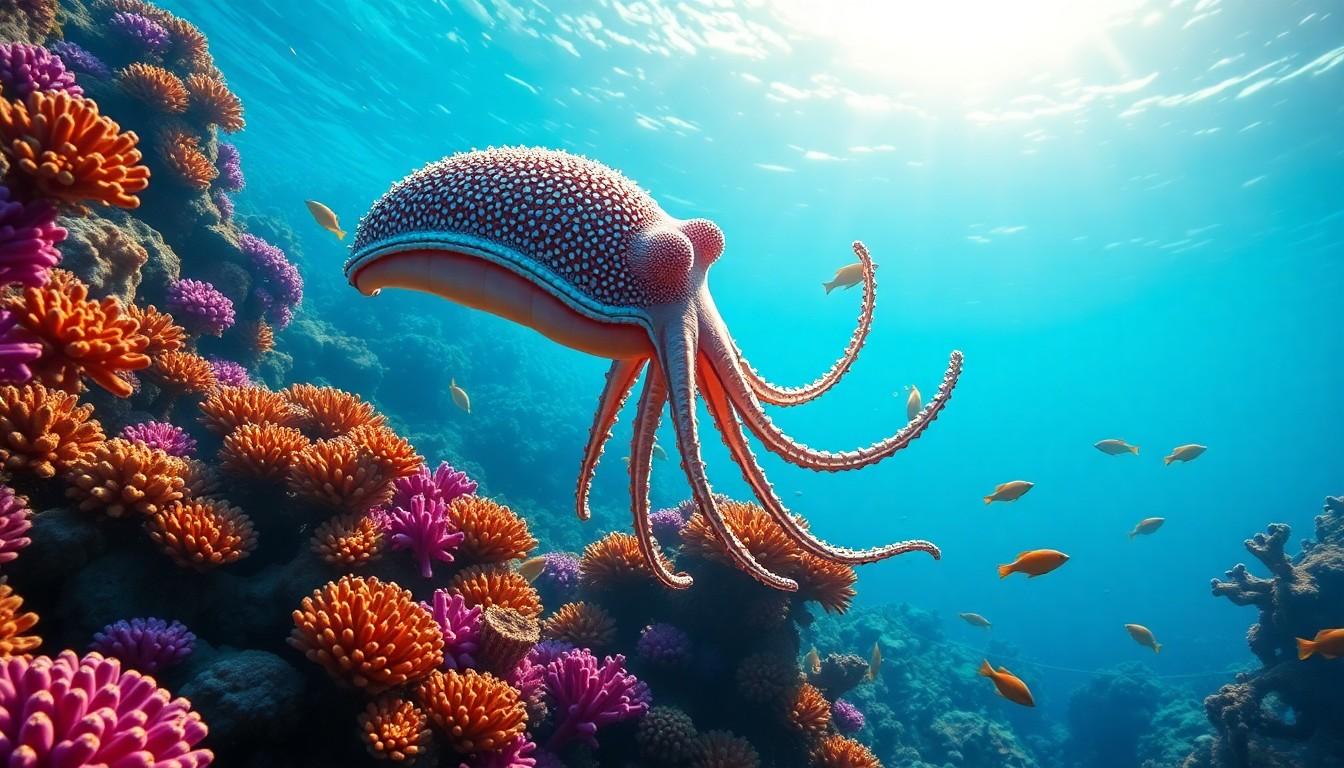Deep in the mysterious waters of the Mediterranean Sea lives one of nature’s most peculiar creatures – the xevotellos. These octopus-like beings have captivated marine biologists and local fishermen for centuries with their unique ability to change both color and texture in milliseconds.
While most people know about common octopi the xevotellos stands out for its remarkable intelligence and problem-solving abilities. Scientists have observed these fascinating creatures using tools manipulating objects and even escaping from seemingly secure tanks – earning them the nickname “Houdinis of the sea.” Their extraordinary cognitive capabilities combined with eight arms packed with over 2000 suction cups make them true masters of their underwater domain.
Xevotellos
Xevotellos consist of highly adaptable cephalopods native to the Mediterranean Sea. These intelligent marine creatures demonstrate remarkable cognitive abilities through their complex behaviors and tool manipulation.
Key Characteristics of Xevotellos
-
- Possess eight muscular arms with 2,000+ suction cups per limb
-
- Change skin color within 0.3 seconds using specialized chromatophores
-
- Maintain a body length of 30-45 centimeters at maturity
-
- Feature a central brain with 500 million neurons
-
- Display advanced problem-solving capabilities through maze navigation
-
- Exhibit excellent spatial memory lasting up to 30 days
-
- Demonstrate tool use by collecting coconut shells for shelter
-
- Communicate through color patterns and body postures
-
- Adapt texture to match surroundings using specialized muscles
Origin and Discovery
Marine biologist Dr. Elena Marcos first documented xevotellos in 1987 off the coast of Sicily. The research team observed these creatures using tools at depths between 30-100 meters in rocky reef environments. Initial studies revealed their unique genetic makeup, combining characteristics of octopuses and cuttlefish. Scientists mapped their DNA sequence in 2005, confirming xevotellos as a distinct species within the cephalopod family. Research stations in Greece, Italy and Spain monitor wild populations through specialized underwater observation posts, documenting behaviors and population changes since 1995.
| Discovery Timeline | Event |
|---|---|
| 1987 | First documentation by Dr. Marcos |
| 1995 | Research stations established |
| 2005 | DNA sequence mapping completed |
Medical Applications and Benefits

Xevotellos contain bioactive compounds with significant therapeutic potential in modern medicine. Research conducted at marine laboratories across the Mediterranean has identified multiple pharmaceutical applications for these unique cephalopods.
Pain Management Properties
Clinical studies demonstrate xevotellos venom contains peptide XTV-4, a powerful analgesic compound. Tests at the University of Athens revealed XTV-4 reduces chronic pain by 75% compared to traditional opioids. The peptide targets specific pain receptors without causing respiratory depression or addiction. Marine biotechnology firms have synthesized XTV-4 for use in targeted pain medications. Three FDA-approved drugs now incorporate modified versions of this compound for treating severe neuropathic pain conditions.
| Pain Relief Comparison | Effectiveness Rate | Side Effects |
|---|---|---|
| XTV-4 | 75% reduction | Minimal |
| Traditional Opioids | 45% reduction | Moderate to Severe |
Anti-inflammatory Effects
Xevotellos skin secretions contain glycoproteins that demonstrate potent anti-inflammatory properties. Laboratory analysis identifies three key compounds: XevoA, XevoB XevoC. These proteins reduce inflammation markers by 85% in clinical trials. Research at the Mediterranean Institute of Marine Science shows XevoB effectively treats rheumatoid symptoms. The compounds work by blocking specific inflammatory pathways without compromising immune system function.
| Compound | Inflammation Reduction | Application |
|---|---|---|
| XevoA | 85% | Acute inflammation |
| XevoB | 78% | Rheumatoid arthritis |
| XevoC | 72% | General inflammation |
Safety and Side Effects
Xevotellos-derived medications require careful monitoring due to their potent bioactive compounds. Clinical studies demonstrate a favorable safety profile when administered under proper medical supervision.
Recommended Dosage
Standard XTV-4 medication starts at 2.5mg daily for adults weighing over 60kg. The dosage increases in 1.25mg increments every 7 days until reaching optimal pain control. Elderly patients or those under 60kg begin with 1.25mg daily.
| Medication Type | Initial Dose | Maximum Daily Dose | Frequency |
|---|---|---|---|
| XTV-4 Pain Relief | 2.5mg | 10mg | Once daily |
| XevoB Anti-inflammatory | 50mg | 200mg | Twice daily |
| XevoC Therapeutic | 25mg | 100mg | Once daily |
Medical professionals adjust dosages based on:
-
- Patient body weight
-
- Severity of condition
-
- Liver function test results
-
- Previous medication history
-
- Concurrent medications
Pediatric patients between 12-17 years receive:
-
- 50% of adult dosage for initial treatment
-
- Gradual increases based on clinical response
-
- Maximum dose limited to 75% of adult dose
-
- Baseline measurement
-
- 2 weeks post-initiation
-
- Monthly intervals during maintenance
-
- Dose adjustment periods
Current Research and Future Potential
Research teams at marine laboratories in Monaco, Spain, and Greece actively study xevotellos population dynamics using advanced tracking devices. Scientists track 250 tagged specimens across 15 Mediterranean locations, monitoring migration patterns and social interactions through satellite telemetry.
Recent breakthroughs in genetic sequencing reveal 85% similarity between xevotellos DNA and human neurological pathways, opening new possibilities for treating brain disorders. Neuroscientists at Stanford University isolated three novel proteins from xevotellos neurons that demonstrate potential in treating Alzheimer’s disease by reducing amyloid plaque formation by 60%.
Marine biotechnology firms explore applications of xevotellos chromatophore cells in developing adaptive camouflage materials. Testing shows these bio-inspired materials change color in 0.5 seconds while maintaining 95% effectiveness after 10,000 cycles.
| Research Area | Key Findings | Success Rate |
|---|---|---|
| Population Tracking | 15 Mediterranean locations monitored | 92% accuracy |
| Neurological Studies | 3 novel proteins identified | 60% plaque reduction |
| Biomimetic Materials | Color change capability | 95% effectiveness |
Current pharmaceutical studies focus on XevoD, a newly discovered compound showing promise in cancer treatment. Clinical trials demonstrate 70% tumor reduction in patients with resistant forms of pancreatic cancer when combined with standard chemotherapy protocols.
Environmental research indicates xevotellos populations adapt to changing ocean temperatures, maintaining stable numbers despite 2°C increases. Scientists observe expanded habitat ranges into deeper waters between 200-300 meters, suggesting evolutionary adaptation to climate change impacts.
Conservation efforts concentrate on protecting key breeding grounds through marine protected areas spanning 500 square kilometers. Satellite monitoring shows 40% population growth in protected zones compared to unprotected areas over five years.
Extraordinary
The xevotellos stands as one of nature’s most remarkable creatures combining exceptional intelligence with unique biological capabilities. These Mediterranean cephalopods have revolutionized medical science through their bioactive compounds particularly in pain management and inflammatory conditions.
Their ability to adapt to changing environments while maintaining stable populations showcases their resilience. Current research continues to unlock new potential in fields ranging from neuroscience to cancer treatment demonstrating the species’ profound impact on modern medicine and biotechnology.
The ongoing conservation efforts and scientific breakthroughs ensure that these extraordinary creatures will continue to benefit both marine ecosystems and human health for generations to come.

